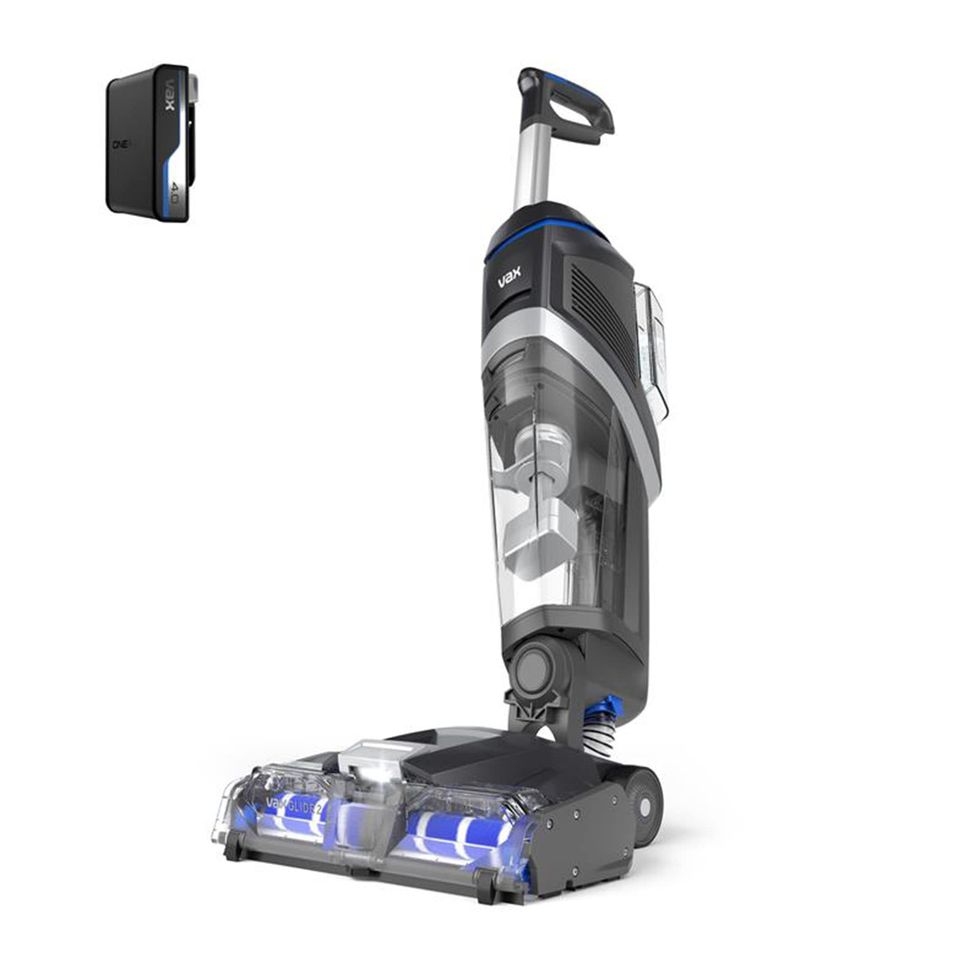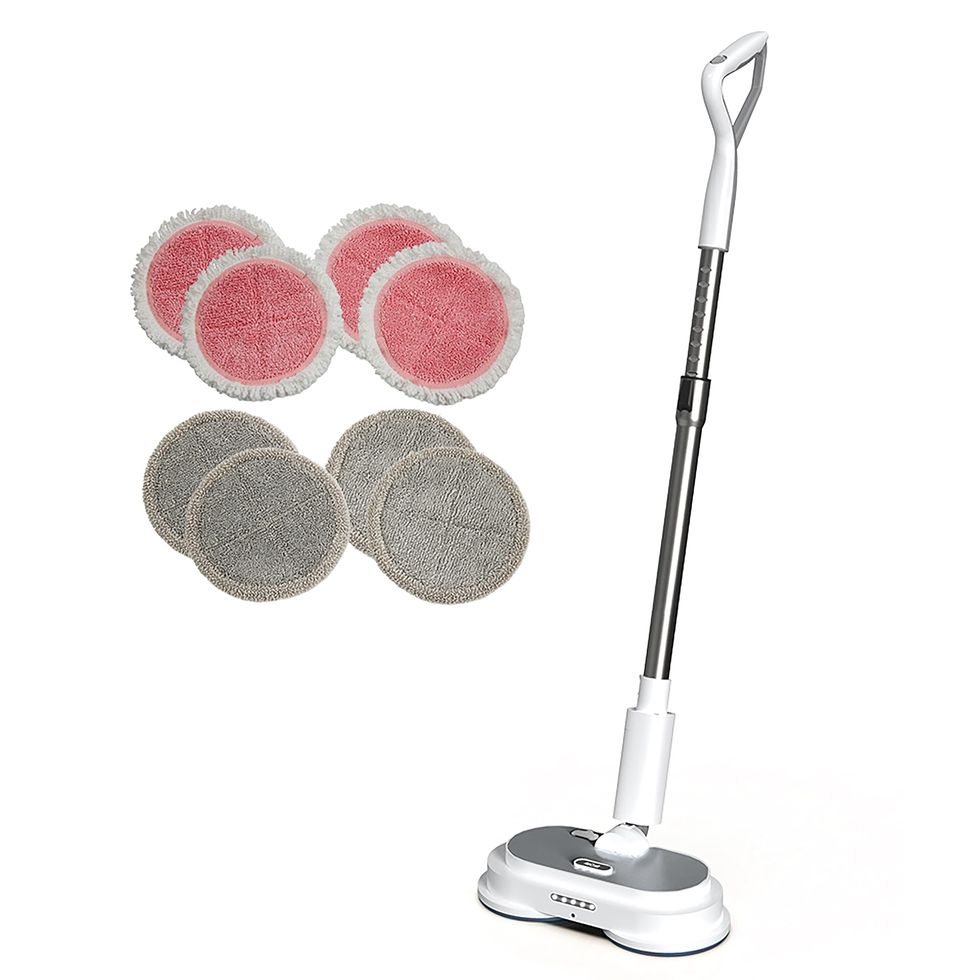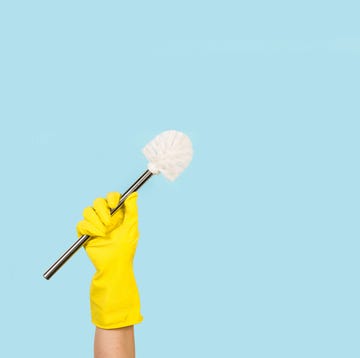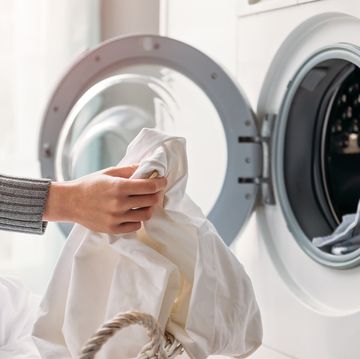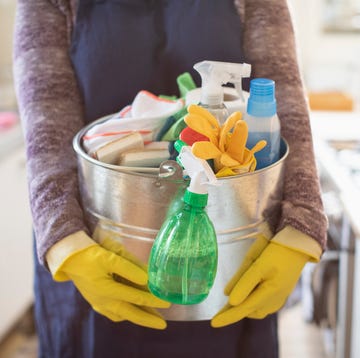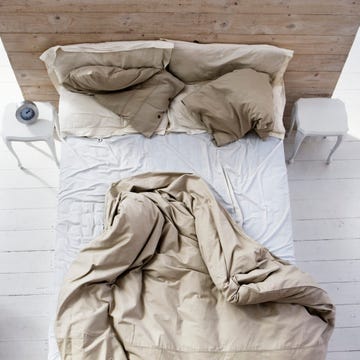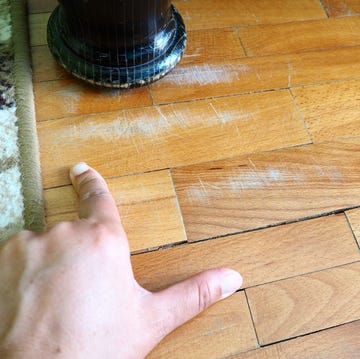I’m a traditionalist when it comes to cleaning my hard floors. My mum taught me with a mop and bucket, which I continued to use while studying at university and still use today – why break the habit of a lifetime, right?
I’ve tested all kinds of mops over the years at the GHI, but I admittedly don’t have much experience with hard floor cleaners. So naturally I was a little uneasy around the Bissell CrossWave OmniForce Edge when I first unboxed it in my home.
This beast of a machine made my mop and bucket look laughable. But how did they actually compare when put head-to-head on my splattered floors? I put them to the test to see if it’s finally time to kick the proverbial mop and bucket.
Setting up
We all know what’s involved with prepping a mop and bucket. You fill the bucket with hot soapy water, dunk and wring your mop and you’re good to go.
The Bissell admittedly needed a little more attention. First of all, I had to charge it in its Clean-out Tray. This is a docking station the hard floor cleaner sits in to charge up. It takes up to four hours in total.
Once that’s done, you simply fill the clean water tank with warm water and Bissell’s floor cleaner solution and you’re ready to mop. So providing you’ve pre-charged there’s similar effort so far.
Mopping the floor
Whenever you mop, you should always vacuum first, otherwise you could end up scratching your floors as scrub around small stones and debris. That’s not necessary with the Bissell. Not only does the mop function vacuum at the same time, there’s even a vacuum only function if you want to give your rugs a once over before you start mopping.
I tried this out on my carpet and the function’s not just for show. Even though I’d recently vacuumed it picked up a fair amount of hair. It even had a better reach against the wall thanks to the increased Edge on one side of the roller. However, while the vacuum function worked well for small crumbs on the hard floor, the air it vented blew away pet hair as I neared it, rather than collected it. The setting is almost a little too powerful!
The controls couldn’t be much simpler. There’s a button to activate the mop mode (you press it again to switch off). Plus there’s a turbo function for when you need more power (and water).
It glided across my floors and wasn’t too heavy or awkward to manoeuvre. Although it did feel a little strange working my way backwards across the floor (as you always do when you mop) with what felt like an upright vacuum cleaner. It could reach under shorter cabinets, and made quick work of everyday dried spills and stains in the kitchen.
The reach (even with the longer side of the roller) couldn’t quite pick up spilled crumbs around the edge of my kitchen cabinets. Although my regular vacuum can’t reach here either – I always rely on a dustpan and brush for this. Drips and spills were collected in the bathroom, and the reach was sufficient under my toilet, however a flat mop would be better for getting right to the back.
I was a little concerned about the battery at first, but then realised you should be reading it from above as you clean, rather than from the front, so 18% suddenly turned into 81% - phew! In fact, I covered my front room, kitchen and two bathrooms with battery and cleaning solution to spare, and without needing to empty the dirty water tank until I’d finished. In fact, I picked it up again the following day to try out the turbo mode on the scuffed floors by my front door. I wasn’t expecting the dirty water to look as dirty as it did. And what you’re looking at is the water after I’d already gone over my floors with the hard floor cleaner the day before. It shows the difference the turbo mode can make and how much hidden dirt there is, especially by the front door.
Mopping manually obviously needed more effort, not just in the movement, but also in the scrubbing and the wringing of the mop head. The water also needs to be changed regularly, otherwise you’re just reapplying dirty water to your floors.
There are mop buckets out there which can keep the clean and dirty water separate if this bothers you, like the Vileda RinseClean Spin Mop System.
While it looks like the hard floor cleaner is the clear winner off the back of this, the mop was still the better option for spot cleaning. For instance, my dining chairs leave scuffs on my floor where they’re dragged as we seat ourselves at the table and the Bissell didn’t have the pressure to remove these. But with a bit of focussed scrubbing, my mop did the trick.
Likewise, in the bathroom, while the Bissell cleaned my tiles, it didn’t reach into the grout like my mop would. So I needed to go over this again. So the mop was clearly better for stain removal, but a fair amount of elbow grease was naturally required for this.
In terms of drying, my manual mop leaves the floors quite wet as I work, no matter how well I try to wring it. In retrospect this likely isn’t great for my floors. Even though they’re sealed, excess moisture on wood can cause it to swell, warp and crack. After mopping manually, it takes around 20 minutes to fully dry.
By comparison, the hard floor cleaner took minutes. Literally it was drying so quickly that I struggled to get a picture of the wet floor before it was gone! The vacuum function removes the excess moisture as it cleans. Once dry, the manual mop also left more obvious streaks behind, while the hard floor cleaner’s work appeared more uniform.
Cleaning up
So we all know what’s involved with cleaning up after mopping with a traditional mop and bucket. You empty the dirty water, rinse the bucket with soapy water and wash the mop head in the washing machine (if machine washable). Fail to do this after each session, and the damp and dirty mop head will stink as bacteria grows. It’s a fairly simple process, but it is a little awkward.
I figured the Bissell would be trickier to clean as there’s so many more components. But the self-clean cycle came to the rescue. All you need to do is empty the dirty water tank, and add the Clean-Out Cycle solution to the clean tank.
It’s worth mentioning, if you’ve picked up some hairs, you will need to remove these from the mesh in the dirty water tank’s lid. Plus there’s a strainer in here to keep it separate from the water before you tip it away.
Once you’ve done this, you sit the Bissell in the charging dock and press the self-clean cycle button on top of the handle. It immediately gets to work – the brush roll spins and the solution is applied throughout and disposed in the dirty water tank. The whole cycle takes about 20 seconds. You then empty out the solution, rinse the tanks and brush roll window and leave the parts to dry. There’s even a little hole in the charging port for the brush roll to dry upright.
It sounds complex, but I definitely prefer cleaning up after the Bissell compared to the mop and bucket. And it saves a cycle in the washing machine.
Conclusion
On the whole, as you’ve guessed, I am converted. The hard floor cleaner was faster, easier on my back and hands and quicker to dry. Plus it removed the need to pick up crumbs and hairs beforehand, although it’s not a replacement for a dedicated vacuum cleaner.
But the mop still has its uses – especially when you’re dealing with stubborn stains which require scrubbing. It can also reach into more awkward spaces that a hard floor cleaner might not, such as in the grout and beneath the toilet. The mop will likely provide a m0re thorough clean where needed, but that requires more effort from you and regular replacement of the dirty water.
Considering this, is it worth storing both appliances? Probably not. There aren't enough stubborn stains around my home to warrant the extra effort of the mop and bucket, and I happen to have a small electric cleaning brush which will do the same thing where needed and save me some storage space. The Bissell is more than enough for everyday spills and stains, and the cleaning power is consistent compared to a mop and bucket.
Ultimately the mop still does a decent job of cleaning the floor. But if you’re fed up with the effort and back ache that usually follows, it might be worth upgrading to a hard floor cleaner to see what a difference it can make to this chore.






